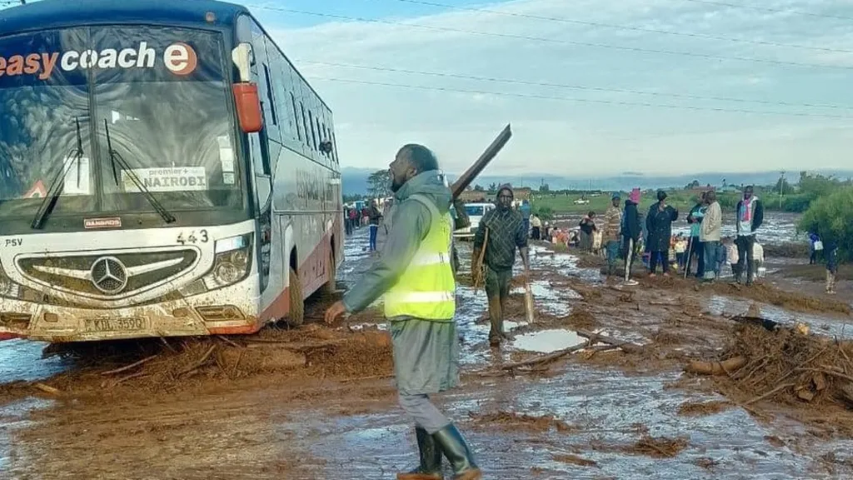
Photo Credits: Kenya National Highways Authority/BBC News
Kenyan officials have reported that over 40 individuals lost their lives after a dam ruptured due to heavy rains and flooding, causing devastation in villages near Mai Mahiu, approximately 60 kilometers (37 miles) from Nairobi, the capital. The tragic incident occurred while people were asleep, with many swept away by the surging waters.
Governor Susan Kihika of Nakuru county described the death toll as a conservative estimate, anticipating that more victims may still be trapped in the mud. The flooding, which has claimed over 100 lives across Kenya in the past month, prompted rescue efforts in various villages, including Kamuchiri and Kianugu in Nakuru county.
Of the recovered bodies, 17 were children, as reported by police commander Stephen Kirui. The calamity left survivors grappling with loss and devastation. David Kamau recounted the unprecedented nature of the floods, emphasizing the severity of the situation.
Another resident, Peter Muhoho, shared his harrowing experience of witnessing neighbors being swept away and the heart-wrenching discovery of belongings belonging to those lost in the deluge.
Peter Muhoho holding the bag of a known child who swayed away.
The government, foreseeing further rainfall, has postponed the reopening of schools nationwide. The floods have displaced over 130,000 individuals, many of whom have sought refuge in educational institutions.
The impact of heavy rains extends beyond Kenya, affecting neighboring Tanzania and Burundi. In Tanzania, at least 155 fatalities have been recorded since January, while in Burundi, nearly 100,000 people have been displaced. The capital, Bujumbura, witnessed a tragic toll, with heavy rains demolishing thousands of homes, resulting in numerous casualties.
Meteorological factors, such as the Indian Ocean Dipole (IOD), play a significant role in driving the intense rainfall. The IOD, analogous to the Pacific's El Niño, influences sea-surface temperatures across the Indian Ocean. A positive phase of the IOD, characterized by warmer waters in the western Indian Ocean, can lead to heightened precipitation, even without El Niño conditions. However, when both a positive IOD and El Niño coincide, as observed last year, the rainfall in East Africa can reach extreme levels.
Historically, the convergence of a strong positive IOD and El Niño has been catastrophic, with severe flooding in 1997 and 1998 resulting in over 6,000 deaths across the region. Such events underscore the urgent need for preparedness and mitigation strategies to minimize the impact of natural disasters on vulnerable communities.















